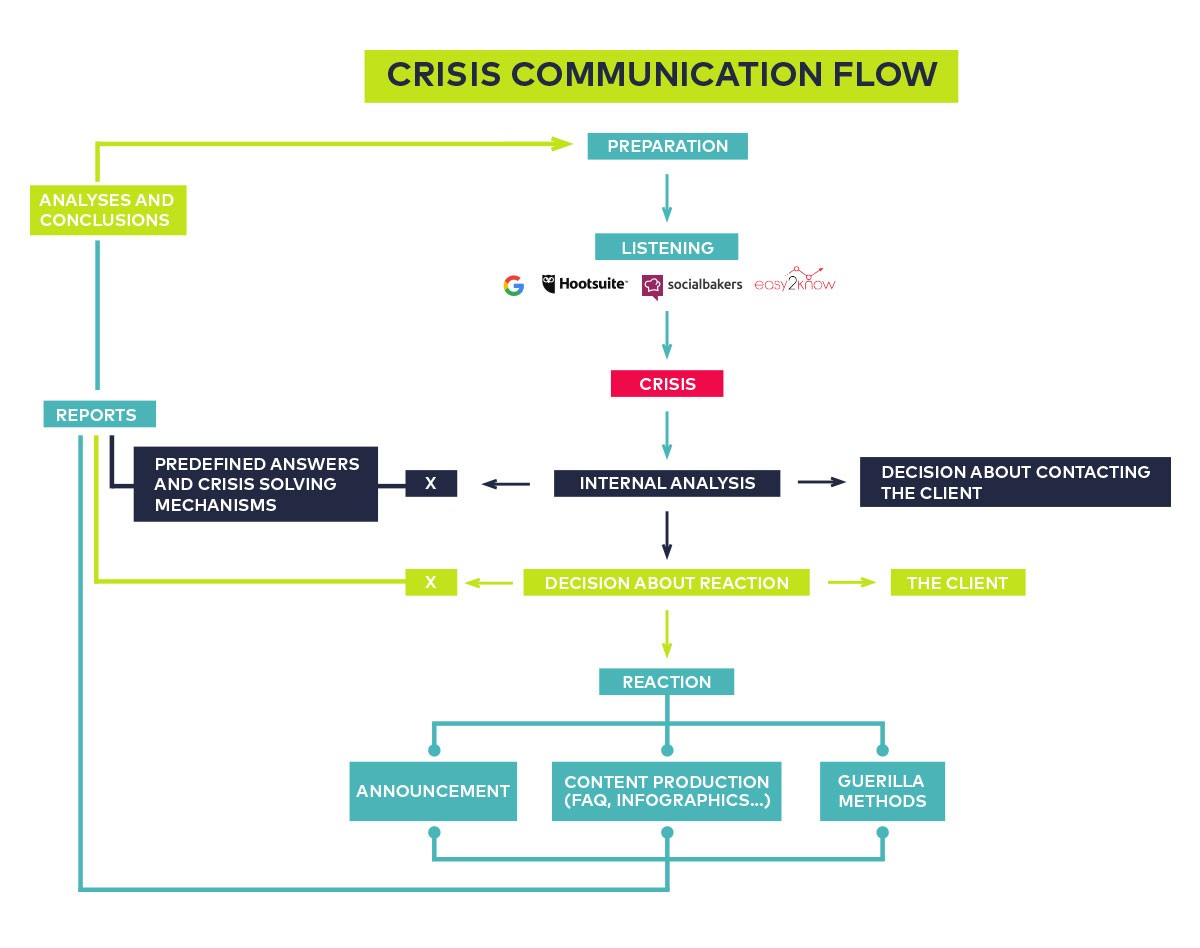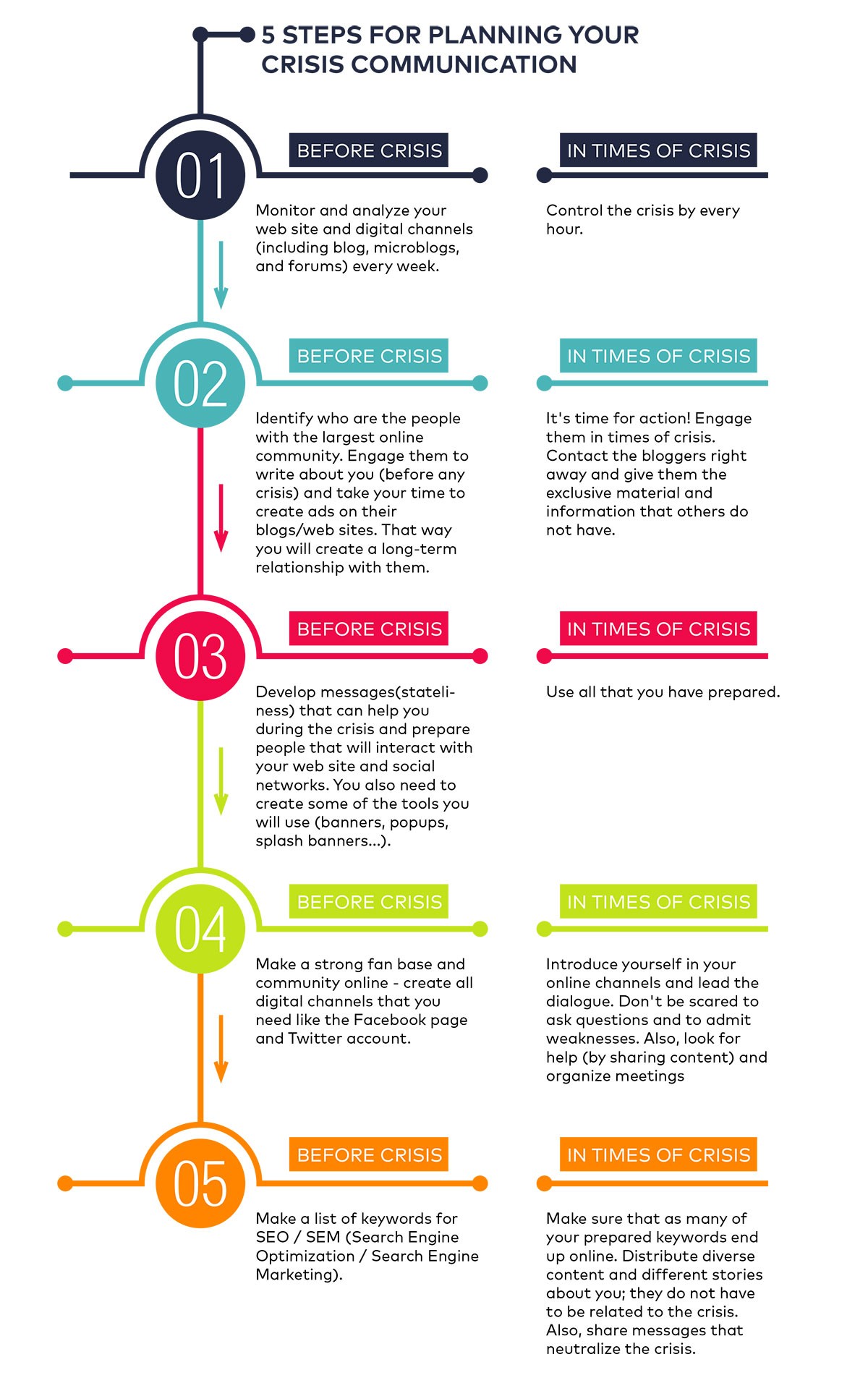Preparation is Half the Battle
What We Can and Should Do Before, During and After the Crisis on the Web Occurs
I entered the world of marketing as a high school student, in the mid-80s. At the time, Punk and New Wave were all the rage. In socialist Yugoslavia, my home country, it was hard as hell to find T-shirts with band emblems and inscriptions. Resourceful as I was, I decided to start making them myself. I wanted to own them personally, but also to gift and sell them. Back then, there were no image copiers around and you had to go through the tedious and lengthy process called screen printing. If you lacked patience or wanted to start with printing as soon as possible, so that you can have your T-shirt for Saturday night out, you were likely to mess up the template. As a result, you would have to repeat the process all over again. Noticing how much I was tormenting myself and rushing to get a T-shirt, one master of the craft thought me the golden rule of screen printing and you could say any other occupation.
He told me: “Preparation is half the printing.”
Indeed, preparation is the foundation of any kind of human work and communication, especially when it comes to its “crisis” dimension. Unfortunately, it’s either overlooked or people unnecessarily turn it into a boogeyman. Yes, things can be unpleasant and emotionally-charged, the rule being emotions are best set aside in business. Nevertheless, if you approach the crisis preparation diligently, as an integral part of a digital communication strategy, and also engage in continuous execution, then it’s possible to get by with minimum tension and your reputation intact too.
Let’s see what we can do to control the crisis instead of letting it control us.
Basics of Successful Crisis Management
A crisis communication refers to the process of publishing reputation-damaging (truthful or false) information on an individual, event, work, company, or an organization. Think of it in terms of “what others talk about us when we are not present” or quite simply any relevant piece of public opinion. This type of crisis reflects poorly on business performance, other operational areas, and organizational functioning.
Furthermore, the proliferation of internet technology has ushered in a new era of crisis communication in which one click can trigger a chain of adverse events. The good news is activities linked to online crisis communication can control or mitigate the damage from dangers that lurk in the digital world.
So, regardless of whether you are an employee, outside expert, or an agency in charge of communication, you need to have:
- Flawless knowledge of the company (or individual or organization) you represent
- In-depth awareness of the broader business environment, competition, and conditions
- Preparation, preparation, and more preparation
- Timely reaction
- Honesty and open-mindedness
- Strong relationships with management, stakeholders, and media
- Ability to disseminate accurate and complete information
- Analytical and improvement-seeking aptitude
However, far-fetched it may seem, it is not uncommon even for people working in communication departments of companies and organizations not to possess complete and correct information about the internal goings-on. Sometimes, they receive only scattered bits and pieces of them. There’s one saying that rings true in this context. It goes like this: “A priest, lawyer, and crisis communication manager have to know you better than you know yourself.” OK, I admit, the last one I added in a spur of the moment.
The Stage of Crisis Communication Execution
Every instance of crisis communication is exceptionally stressful for those who are in any way implicated by the leaked information. Therefore, it is a good idea for crisis communication to be handled by those who are not stricken by emotions. And if you think agencies adore these kinds of projects due to costs being a secondary concern, trust me— it’s not like that exactly.
We are not overly keen on juggling hot potatoes. It is always preferable and less harmful to engage in ongoing planning and rely on proper preparation when the crisis emerges. In any event, crisis communication has to be a component of your overall communication strategy, including the strategy for digital channels. Moreover, the communication needs to be adjusted to the specifics of these channels.
Whoever is in charge of these activities must adhere to these steps:
- Identifying potential crisis causes and topics
- Working out a crisis communication plan and distributing the roles
- Creation of various materials (multimedia, why not?) that help present the truth adequately
- Using tools to continuously track publications in traditional and social media, as well as influencers’ sphere
- Estimating the significance of particular publications that either mention you directly or carry bad news for you
- Letting decision-makers (agency clients or PR managers) know the decision to initiate the crisis communication plan has been made
- Conducting activities as per crisis communication plan
- Evaluation and measurement of deployed activities
- Refining the plan based on practical insights
These steps might seem theoretical, but they are actually very actionable and alleviate many headaches. For smoother practical execution, we can distinguish periods before, during, and after the crisis. In other words, we ought to think about the crisis in three different timeframes:
Before the crisis
- Assembling a team, preparing internal channels of communication, consensus on who has the authority to ratify
- Investigation of potential causes, crafting messages that address relevant topics, and turning them into various content pieces
- Contacting and building relationships with instances that may play an essential role during the crisis, especially if they are impartial and receptive to our version of the story
- Deploying material featuring positive stories and claiming search engine result pages (SERP)
- Building web communities, creating goodwill and reputation around sensitive issues prior to the crisis
- Tracking themes that define the crisis and monitoring of related keywords on social media, influencer activities, and traditional media
During the crisis
- Identifying the problems, reacting to them, and minimizing the damage
- Dispatching truthful and timely information to the public and media
- Responding with arguments
- Relying on existing or production of new content, as well as its publishing
- Swift and prompt reaction is of paramount importance
After the crisis
- Analysis of causes and damage the crisis has inflicted
- Intensified communication and recovery through positive narratives
- Learning from experience for future reference and improving the crisis communication plan

Graphic 1: Flow of crisis communication
Speaking from experience, I know this all sounds quite complicated. However, that is the reason why it is split into different steps. For starters, you should rally with all individuals who know the company you work for or client you are cooperating. Foster an informal atmosphere: offer snacks, serve a beer, and mix a cocktail.
Ask a simple question: “What can be said ill of us and who can say that?”
Maybe you will not get answers after the first one, but after a second cocktail or a beer, you would be astonished at what happens. Notions of complacency and lack of awareness of reputation-shattering risks disappear. Suddenly, there is more cautiousness and also an idea of how to reduce and eliminate these risks.
Learning from Other People’s Experience, Preferably
In the last few years, we witnessed a few fires raging online, with the emphasis on social media. I even covered one example, which was related to the recent fire in Paris.
These incidents, coupled with case studies, reveal what all poorly-managed online crises have in common:
- Lack of in-house expertise
- Lack of external professional aid
- Non-existing crisis communication plan and content
- Lackluster monitoring
- Ignoring all the implications of a situation
- Offline spillover without direct insight and control
- Clumsy, harsh, and unprofessional reactions in an attempt to solve a crisis though media (buying)
- Lack of evaluation and sticking to old “the thunder does not strike the same spot twice” logic.
Last but not least, we implore you not to shy away from crisis communication. In fact, rest assured that crisis communication will be required and that this likelihood increases over time. Whatever you do, you can have your employee injured or dead. Customers can find a piece of glass or a bug in your products and then post the photos online. Someone unhappy with your service can give you an angry call. “It will not happen to us” is the sentence that is at the very bottom of many sleepless nights filled with remorse.
Everyone, or at least everyone important, is on the internet. They will see the content we serve. It doesn’t matter whether it is true or not. During the time it takes you to prove your point the damage has already been done. That is the reason to plan for and prepare for the crisis ahead of time (Table 1).

Table 1: Steps in planning and overcoming communication crisis


